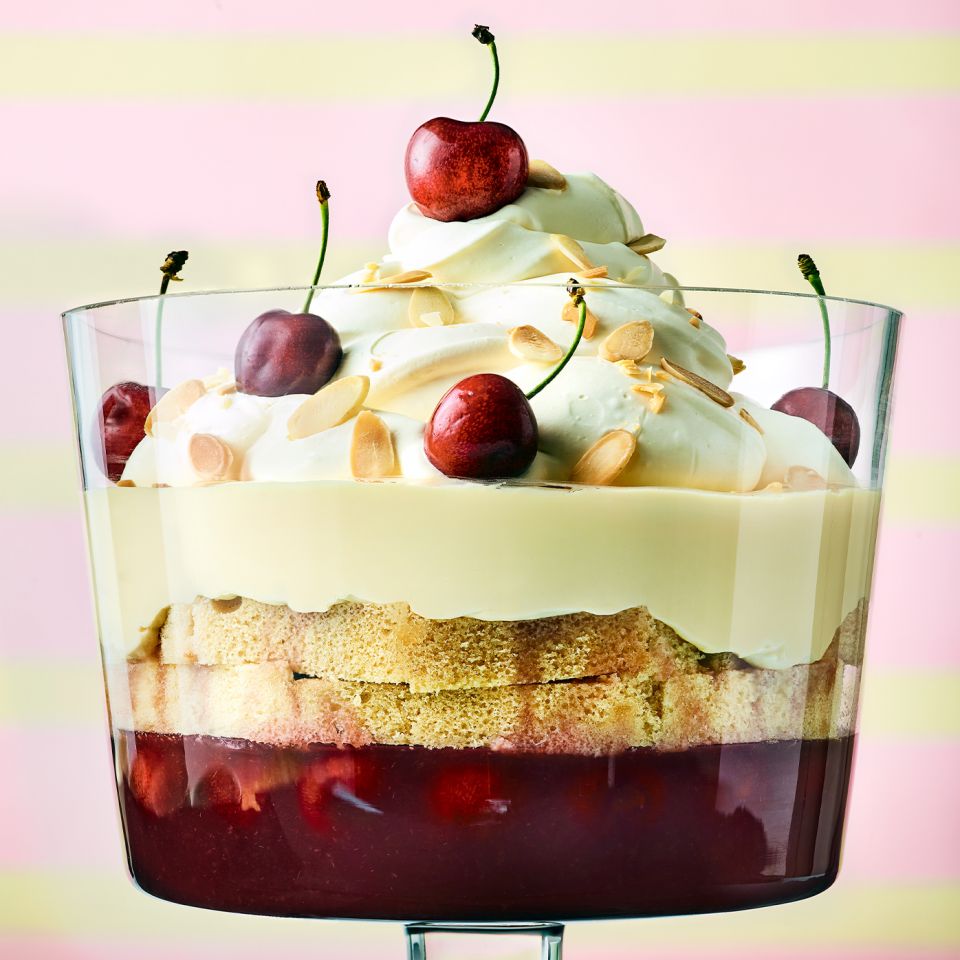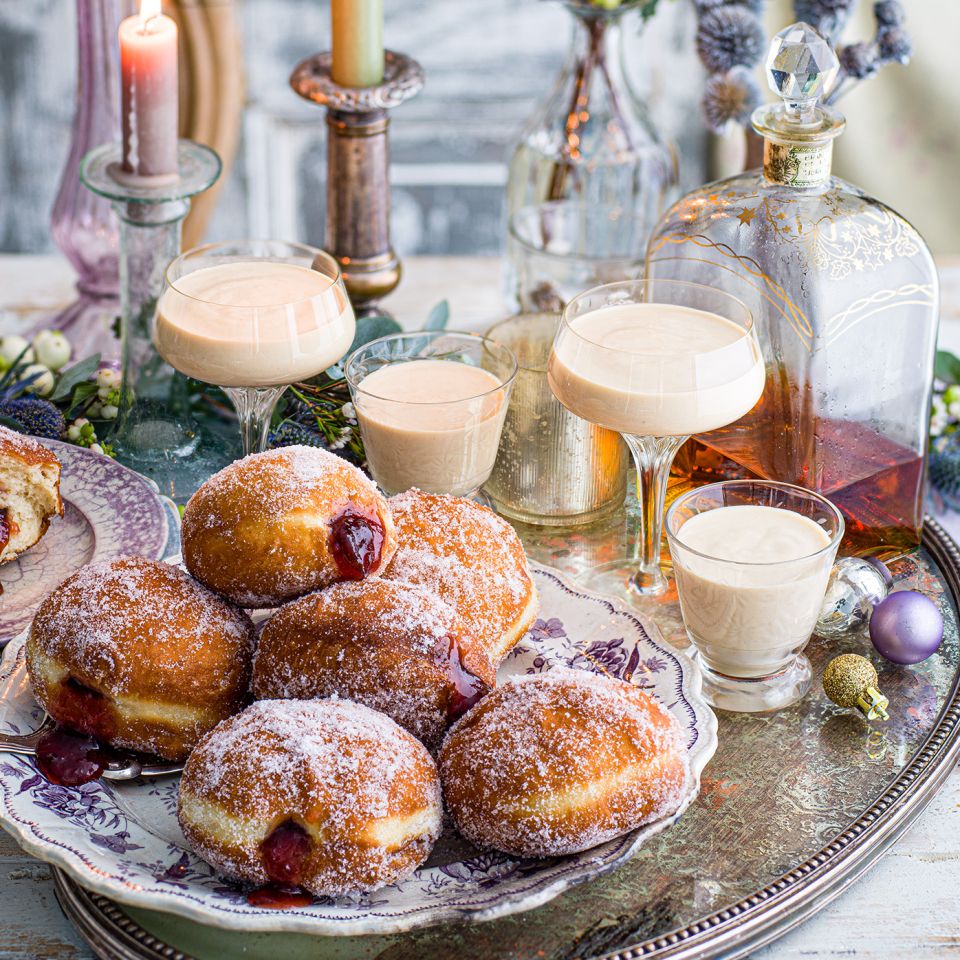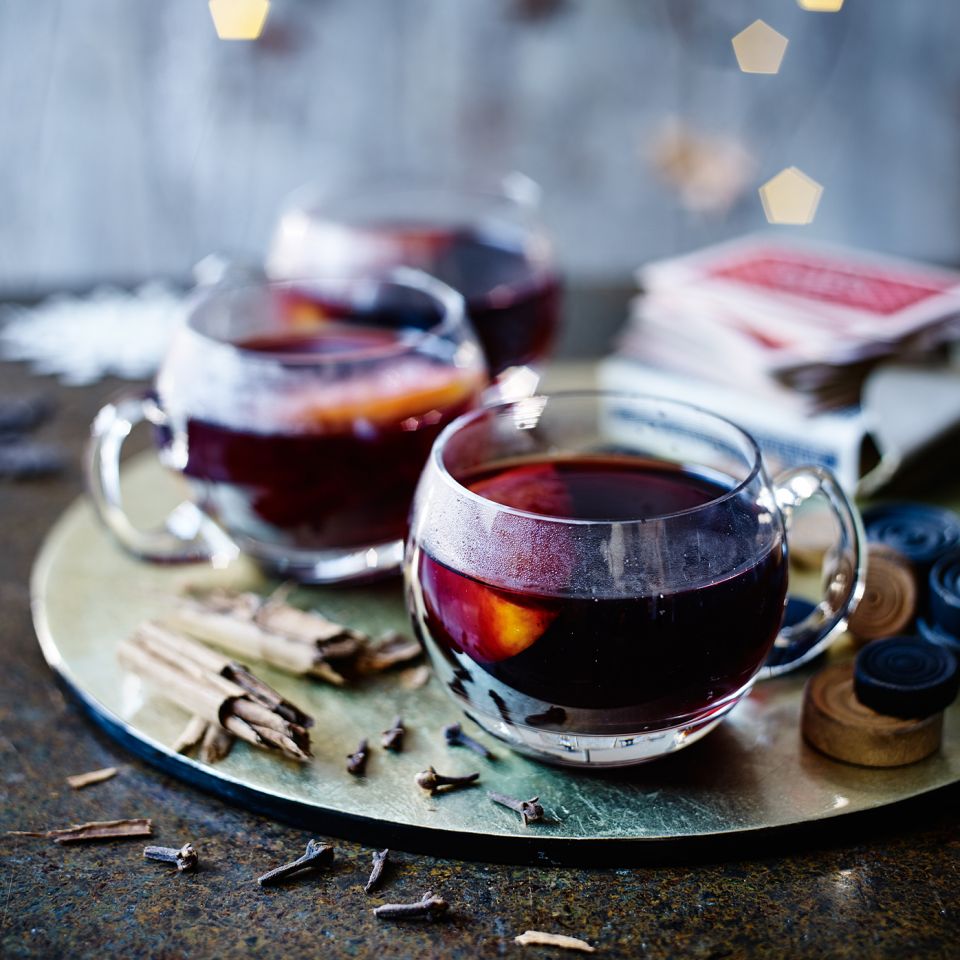Food
The 12 treats of Christmas – and the stories behind them
by Sharon Parsons

Everyone has a festive favourite - but what are the origins behind some of them?

1. Turkey
At one time, the traditional Christmas roast was either beef, goose, or rabbit if you were particularly poor. Turkey was originally imported from America (legend has it that Henry VIII was the first to enjoy it on Christmas Day), but it was only in the Victorian era that the bird became more popular. Predominantly reared in Norfolk, the poultry destined for London tables had their feet clad in leather before setting out on their long walk, and once they’d arrived, were fattened up again, ready for their fate.
Try our spiced turkey with turkey butter gravy recipe

2. Chestnuts
Roasted chestnut vendors were once a common site on street corners during winter (in 1851, it was estimated there were over 1,000 roasted chestnut sellers on the streets of London). The nut has long been associated with Christmastime - even Mrs Beeton has a recipe for chestnut stuffing. But it’s The Christmas Song of 1945, with its iconic opening line, which most of us associate with the season’s sentiments, especially immigrant Americans.
Check out our creamy sprouts with chestnuts and pancetta recipe

3. Sausage rolls
Folding dough around meat and cooking it is a classic staple from Greek or Roman times, and it has been used in various forms ever since (think of the iconic pasty, for instance). The sausage roll that we recognise today, however, originated in early 19th-century France, when rolled-out flaky pastry was used to fold around pork filling, then cooked. At one time, sausage rolls were eaten by the aristocracy on Boxing Day: this was when servants had a day off, and dishes were prepared ahead and left for ‘upstairs’.
Try our cranberry and sage stuffing sausage rolls recipe
4. Christmas pudding
Our famous steamed pudding started life as a beef shin pottage flavoured with the likes of dried fruit, spices and wine, before evolving into the rich dessert we know today. At one time, sweet and savoury ingredients were often combined, thanks to the influence of recipes from exotic climes which the Crusaders introduced here (think of the Moroccan tagine, for instance). Similarly, sweet and savoury dishes were all served and eaten alongside, rather than as different courses.
Try our showstopping golden glow Christmas pudding recipe

5. Christmas cake
This fruit-packed favourite was once called a Twelfth Cake because it was traditionally eaten on 5 January. A bean or pea would be added to the mixture and whoever found it in their slice was called ‘King’ or ‘Queen’ of Twelfth Night. (This tradition gradually evolved into the custom of adding a coin or tokens to the Christmas pudding mix). In Scotland, the ‘Whisky Dundee’ is a lighter version topped with nuts, while in northern counties such as Yorkshire or Lancashire it’s traditional to eat the fruit cake with a crumbly cheese such as Wensleydale.
Check out our clementine and chocolate Christmas cake recipe

6. Mince pies
Mince pies were originally filled with a sweet and savoury mix of minced meat and dried fruit, and often given to visitors who passed by as ‘wayfarers’ pies’. During the extravagant 12 days of Christmas - when eating one every day was thought to bring health and happiness - they were something of a status symbol to show off wealth: the fancier and more ornate the better! It’s thought their name may originate from the Latin for ‘make small’, which is mince.
We love master pâtissier Eric Lanlard's classic mince pie recipe

7. Trifle
Recipes for trifle date back to Tudor times, but it truly came into its own during the Victorian era. Concocted in a deep glass bowl so the layers can be seen, the dessert is traditionally made with sponge cake soaked in sherry or brandy, followed by custard, then topped with thick cream and decorated with nuts or glace cherries. Over the decades, it has been gently adapted to include ingredients such as fresh fruit, crushed almond biscuits, and even fruity jelly, which is having something of a sophisticated resurgence of its own these days (vodka jellies, anyone?).
Here's our fruity cherry trifle recipe

8. Yule log
Way back in the Iron Age, Celts would celebrate the winter solstice by burning huge logs. Despite the rise of Christianity, this pagan ritual continued, and eventually became a cake baked in the hearth to represent a log instead. The confection became especially popular in 19th-century Europe when Parisian bakers made decorated ‘buche de Noel’ to display in their windows. Now, this chocolate-covered swiss roll - usually dusted with icing sugar and with a robin perched on top - is a firm festive tea-time favourite here, too.
Check out our indulgent pecan yule log recipe

9. Eggnog
This eggy punch’s origins are generally believed to lie in medieval Europe when monks enjoyed ‘posset’ - a warm punch made with ale, eggs and figs. The ‘nog’ in the name may be from the old English word for ale - grog - or a small wooden cup called a ‘noggin’. It became especially popular with American colonists in the 1700s when rum from the Caribbean - cheaper than brandy or wine - could be substituted.
These damson doughnuts with hazelnut eggnog shots are a stunning festive dessert

10. Mulled wine
This hot, sweet, spicy toddy goes all the way back to the Ancient Greeks and was called ‘hippocras’ after the father of medicine, Hippocrates, as it was drunk for health reasons. Made with wine, spices and honey (and not always hot), it was adopted by the Romans and eventually became popular across Europe. In this country, the concoction was named ‘mulled wine’ in the 17th century - mull means to heat, sweeten and flavour - and those age-old recipes are roughly unchanged from the ones we follow now.
Want to make your own mulled wine? Here's our traditional recipe

11. Cranberry sauce
A species of the cranberry plant does grow here, particularly in the north of England and in Scotland (indeed at Balmoral in 1868, Queen Victoria described a meal ending with a ‘good tart of cranberries’). It is the larger-berried variety in America that is cultivated for use in recipes, not least the meat-accompanying sauce. The story goes it was served with the first Thanksgiving dinner in Massachusetts, and fresh berries have been imported to this country since the 1970s. In less than 50 years, it has become a British Christmas dinner essential!
Try this cranberry and orange sauce recipe by Rosemary Shrager

12. Cheese
During the mid-18th century, a ‘Cutting the Christmas Cheese’ ceremony with friends and family was a much-anticipated occasion. (The Chelsea Pensioners still enjoy the Ceremony of the Christmas Cheeses every year: the ritual dates back 300 years, when cheesemakers would donate their produce in tribute to war veterans). Today, no festive cheese board is complete without a Stilton, though this variety is indelibly linked with Christmas simply because the best milk comes after the end of summer grazing, and the cheese then takes some three months to mature, making it a timely inclusion!
Chef Tom Booton's Camembert wellington recipe is a fantastic alternative to a cheeseboard












